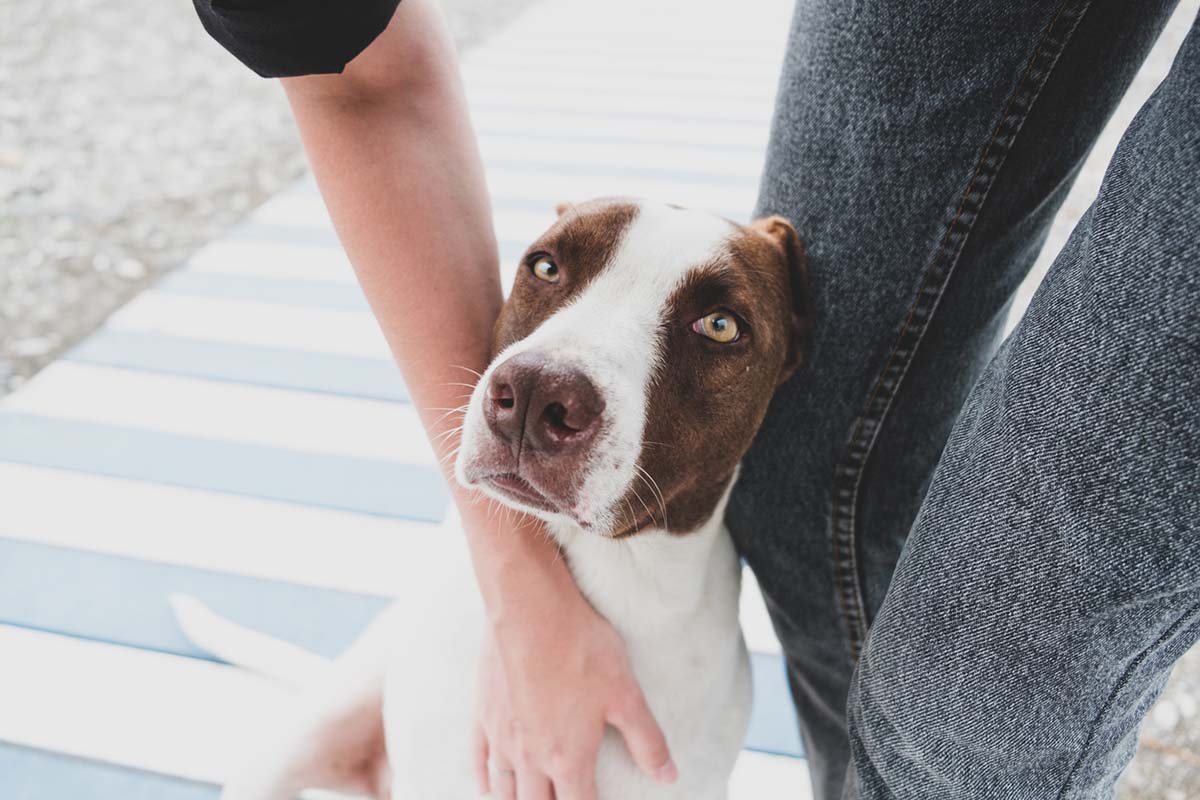If you have the space, the time, and the love to spare, why not consider fostering a dog? You’ll get the pleasure of spending time with a sweet four-legged friend and in turn, provide them with a second chance and the opportunity to experience the joy of a loving home.
Each year more than six million dogs enter animal shelters in the United States alone, and only a little over three million dogs get adopted. That leaves a lot of furry friends in need of foster homes before they find their forever homes.
Why Foster A Dog?

Fostering a dog is a joyful and rewarding experience. Bringing a foster animal into your home gives them a chance to experience life outside the shelter and what it’s like to live in a home, whether it’s for the first time or due to their previous home not working out.
The chance to help foster dogs get a second chance at finding a permanent home is beyond rewarding. Dogs who have been fostered and had the chance to enjoy time with a family in a home environment are more prepared to be adopted into loving homes when they’ve had more social time with a foster family outside the shelter.
5 Reasons to Foster A Dog:
- Foster volunteers save lives and give dogs a second chance
- Fostering dogs is affordable since most shelters provide free veterinary care
- Experiencing the love and joy of a dog (research shows that dogs really do make us happier)
- Dogs in foster homes leave more space in shelters for animals who need rescuing
How To Become A Foster Pet Parent
The first step to becoming a dog foster parent is filling out a foster application. It will ask about things like your availability, whether you own pets already, and your experience with fostering. The foster coordinator from the animal shelter you choose may ask for references, particularly from your landlord if you rent your home.
Once your application is approved there may be a home visit or an interview, again, to make sure your home will make a good temporary home for a foster dog. Most shelters also have a foster parent orientation program to guide you through the process and policies of fostering.
After you’ve completed these steps, you’ll be ready to get matched with a foster dog! The shelter or agency you choose will work with you to make sure the dog you foster will work for your family’s needs and lifestyle.
Guidelines for Pet Foster Parents:
To become a dog foster caregiver there are a few requirements. Shelters and other organizations do their best to make the adoption process easy, but it’s important to make sure foster families are ready for the task and that family members and pets will be a good match.
- In most cases, foster pet parents must be 21 years of age
- Must attend orientation or training from the shelter
- Be prepared to make frequent visits and have reliable transportation to get to the shelter if needed for supplies or medical care that will help get them ready for their forever home, like spay/neuter procedures
- Have the space and time to commit to a foster pet
- Obtain permission from your landlord if you rent your home
- Ensure all pets in the home are up to date on vaccinations and exams
Things to Consider Before You Foster A Pet
Fostering a dog is fun and rewarding, but don’t forget that it’s also a big responsibility. When you foster a dog from a shelter it’s key to remember this task requires some work, and the joy of having a dog in your home is well worth the effort.
Foster Dog Behavior
For dogs who have spent time in a shelter environment, coming into a new home can be an overwhelming experience. It’s normal for dogs to have a little anxiety or warm up slowly. It may take some time and patience for your foster dog to feel comfortable with you, but your love and support will help get them there!
You should also consider if you have another dog. Will they get along, be jealous, or display food aggression?
Time Commitment
Fostering a dog is a significant time commitment. While shelters work with dog foster parents to make sure they’re prepared for the responsibility, it’s important to recognize the task of fostering a dog requires time, energy, and effort.
Attachment
Forming attachments with foster animals is inevitable, especially if they spend a significant amount of time sharing your home. You love them and they love you, which can make it difficult when it comes time for them to be adopted. If you choose to foster a dog, it’s important that you’re prepared to send them off with a good head scratch and a smile when they find their forever homes. Remember that this is the goal and the time that you had with them helped get them there.
Where To Find Foster Care Opportunities

You’re ready to become a foster dog parent, now where can you find a dog to foster? Unfortunately, there’s no shortage of dogs in need of loving homes, but this does mean there are lots of opportunities to foster or adopt. These are some of the routes you can take to start fostering dogs or other animals.
MSPCA Foster Program
MSPCA’s Dog Foster Program is an extension of their adoption centers and aims to give all shelter dogs the chance to be fostered in a loving home. They are always looking to add great foster families to their network who can help assist in saving the lives of shelter dogs.
Rescue Group Adoption Events
Rescue groups like the Animal Rescue League of Boston and the Animal Rescue Foundation of California will periodically host functions to bring in new foster families and get more dogs into foster opportunities. Look up your local rescue for opportunities in your specific area. Petfinder.com is also a great resource to search for rescue groups offering adoption events.
Local Pet Adoption Centers
There are countless independent pet adoption centers and shelters looking for foster parents that can be found close to your community. The animal caregivers at these centers want to see as many dogs fostered (and eventually adopted) as possible and will work with you to become a dog foster parent.
